00%
Authentic Ayurveda
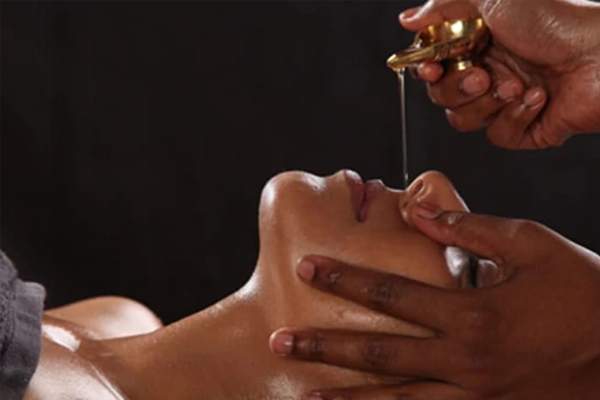
Nasyam is an Ayurvedic therapy that involves administering medicated oils or herbal preparations through the nasal passages.
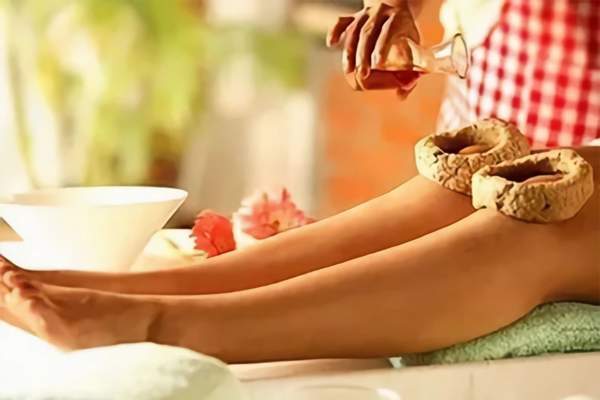
Janu Vasti involves retaining warm medicated oil on the knee joint for a specific duration. This therapy helps to lubricate the knee joint.
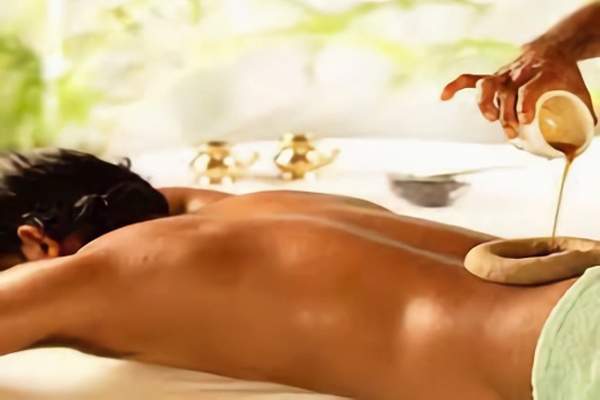
Kati Vasti is a therapeutic Ayurvedic treatment specifically targeting lower back issues. It involves the application of medicated oi.
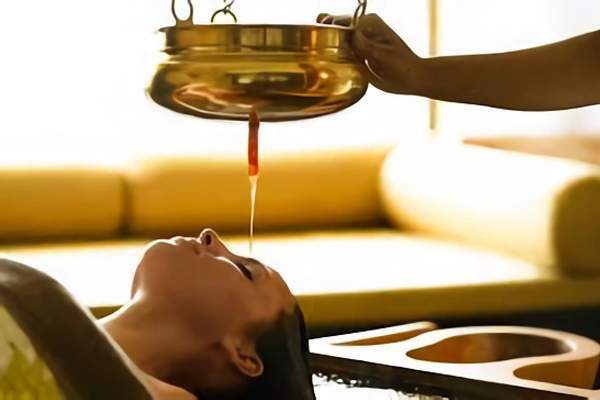
Shirodhara is a profoundly relaxing and therapeutic Ayurvedic treatment that involves a continuous flow of warm herbal oil or
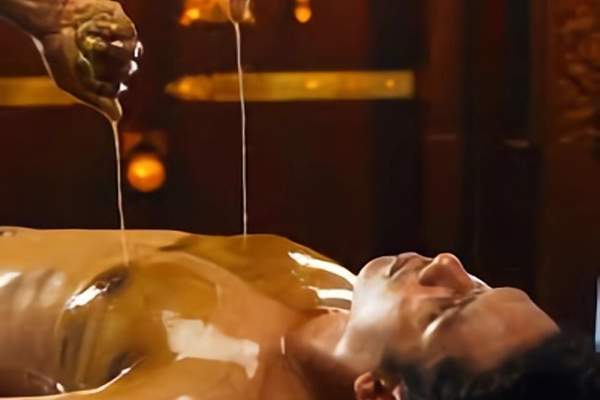
Pizhichil is a specialized therapy that is performed for disorders related to Shareerika doshas ( Body ) and Manasika doshas (Mind).
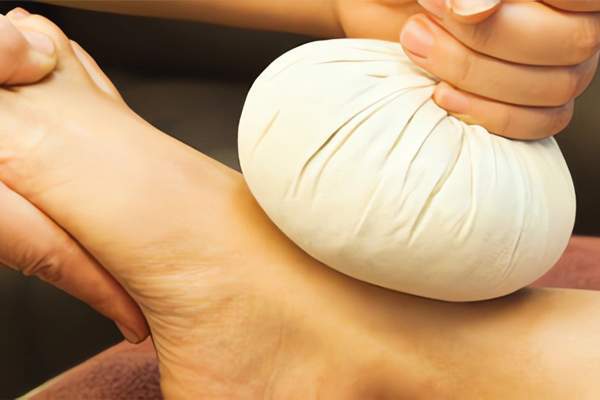
Podi Kizhi is aiso known as Choorna Swedam, is a popular a Ayurvedic therapy that involves the application of heated herbal powders in cloth bundles over the body.
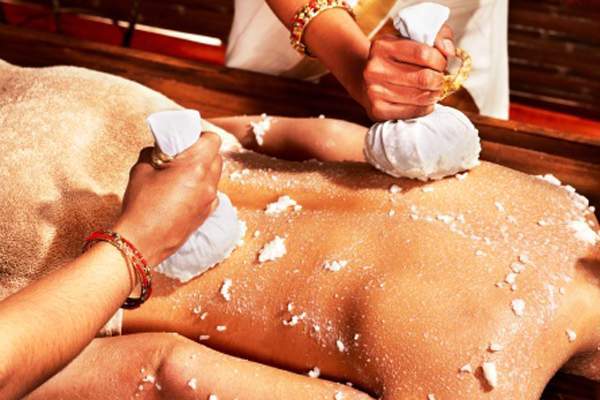
Njavara kizhi is also known as Shashtika shali pinda sweda, utilizes warm boluses filled with specially cooked brown rice, milk and a selection of therapeutic herbs.
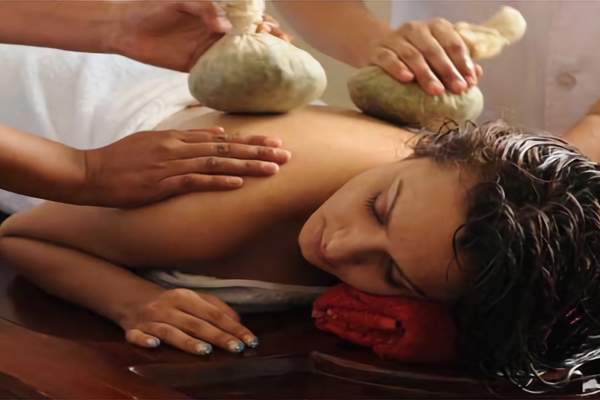
Ela Kizhi is a highly rejuvenating treatment in which fresh plants are fried with several other herbal ingredients, tied into boluses dipped into warm medicated.
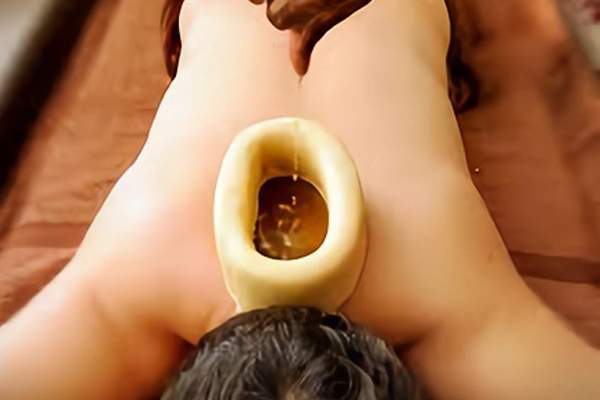
Greeva Vasti is a specialized Ayurvedic therapy focused on addressing issues related to the neck and shoulder region. It involves the application of warm medicated oil.
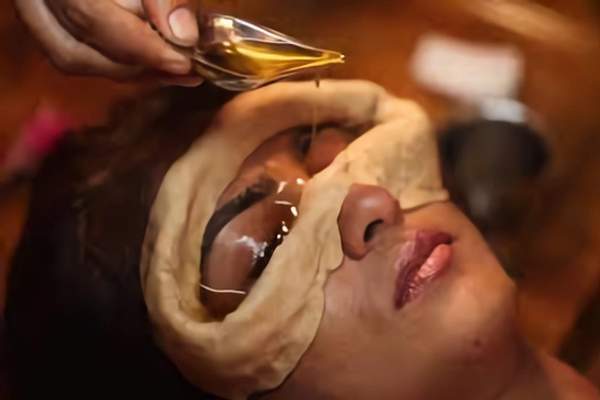
Netra Tarpana is a therapeutic Ayurvedic treatment specifically designed to nourish and rejuvenate the eyes. This specialized therapy involves creating a reservoir (dam).
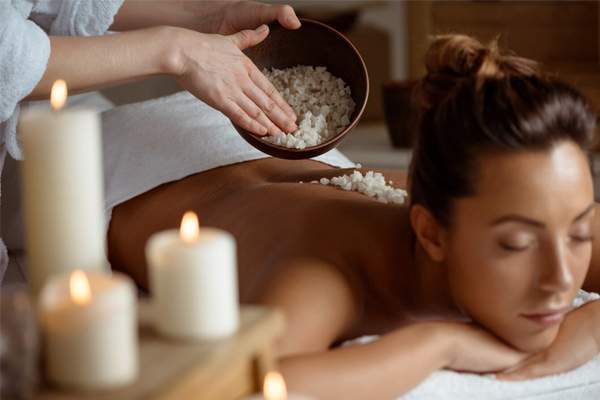
Rejuvenation therapy is a holistic approach to harmonizing the body, mind, and soul, tailored to the individual’s specific needs.
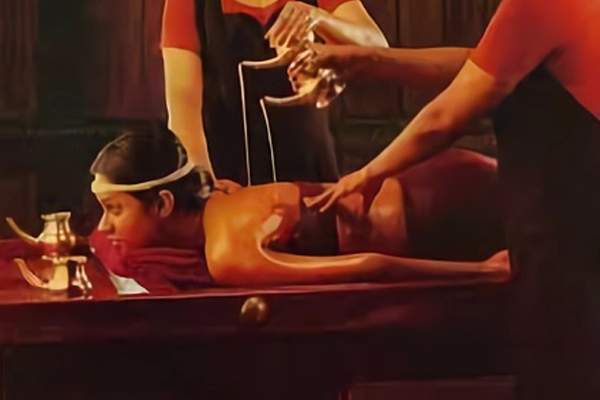
Dhanyamla dhara is an Ayurvedic approach dealing with pouring the fermented liquid that is obtained from fermenting cereals over the body.
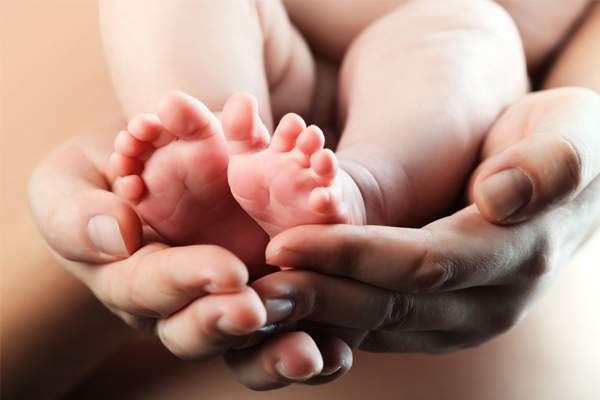
In ancient science of Ayurveda the days after birth are a sacred period-a time of rest, self care and love. When you give birth Vata increases
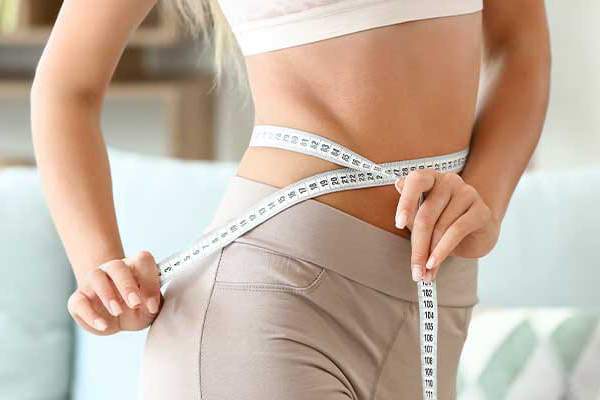
The weight loss program offered aims to achieve sustainable weight loss through holistic methods that prioritize overall well-being.
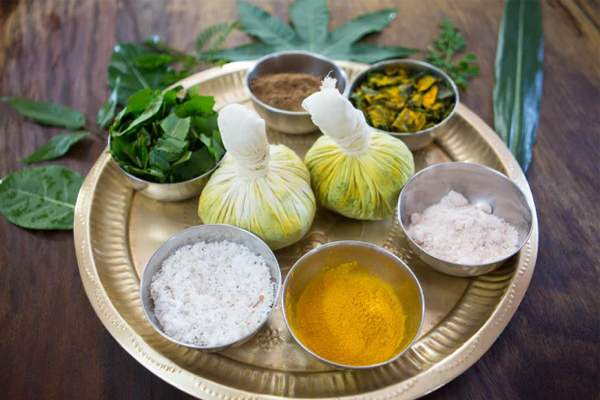
Panchakarma is a comprehensive Ayurvedic treatment aimed at detoxifying and rejuvenating the mind and body.
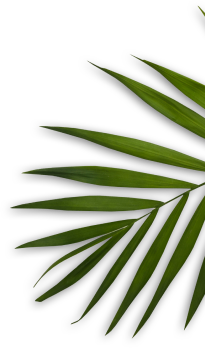


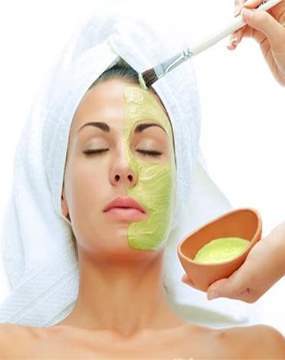
Veda Wellness is an Ayurvedic medical center located in Reefmall, Deira, Dubai. It offers a range of traditional Ayurvedic treatments and therapies aimed at promoting physical, mental, and emotional well-being. The center provides personalized consultations with experienced Ayurvedic practitioners who tailor treatment plans to each individual's unique needs. From massages to specialized herbal treatments, Veda Wellness aims to provide a holistic approach to health and wellness based on the principles of Ayurveda.
VEDA WELLNESS stands out as the premier Ayurvedic wellness center in Dubai, offering unparalleled authenticity and professionalism in its Ayurvedic treatments and Panchakarmas. With a commitment to providing personalized care tailored to each individual’s unique body composition and needs, it has earned a reputation for excellence in the field of holistic wellness.

In Ayurveda, the body’s constitution is determined by the balance of three energies called Doshas: Vata, Pitta, and Kapha.
Explore More
An Ayurvedic detox plan aims to eliminate toxins from the entire system while promoting weight loss.
Explore More
Ayurveda offers several specialized therapies that are specifically designed to address inflammation, reduce pain and swelling.
Explore More
Ayurveda takes a holistic approach to health and wellness. Rather than focusing solely on diseases.
Explore More
Ayurveda offers several specialized therapies that effectively address inflammation, reduce pain and swelling, and improve joint mobility.
Explore More
Ayurveda offers a comprehensive postnatal care regimen for new mothers, focusing, restoring & rejuvenating the body..
Explore More
Ayurveda offers a holistic approach to managing skin disorders such as eczema, psoriasis, & other dermatological conditions.
Explore More
Veda Wellness Slimming Program incorporates Ayurvedic principles to address weight management holistically.
Explore More
Ayurveda offers a multifaceted approach to managing stress, focusing on restoring balance to the body and mind.
Explore More
Ayurveda offers a comprehensive approach to women’s health, providing support and care throughout every stage of life.
Explore More

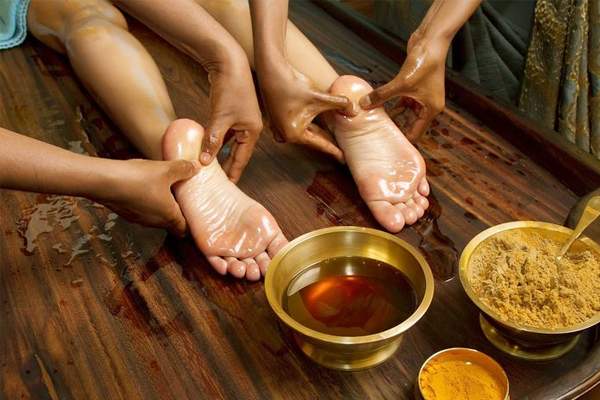
Abhyangam+ Steam Per Session 250 AED Abhyangam + Podikizhi + Steam 350 AED
EXCELLENTTrustindex verifies that the original source of the review is Google. Very satisfied customer here I feel relieved and relaxed thanks to Sharafudheen highly recommend!Trustindex verifies that the original source of the review is Google. Superb service and experience!! Thanks to Nerissa and Remya!Trustindex verifies that the original source of the review is Google. Customer service point of view from this center is beyond expectation. The location is situated inside Reef Mall near Salahuddin Metro Station. Clinic is very clean. Sharafuddin my therapist is very professional. What a great therapeutic experienced I had with this great guy!!Trustindex verifies that the original source of the review is Google. Veda Wellness Ayurvedic Medical Center is such a wonderful facility! if you want to have a massage here and you’re a woman I recommend Aarya her hands are like magic and when she asks if you want to put oil in your hair say yes because she will massage your head and neck and maybe at the end she will give you pink tea mix water made by dry small roses to make it pink. We came there as a family of three so my dad and mom’s therapist are Lina & Abilash and they’re both give excellent service. Thank you also ate Neressa and the other ate Filipina and Devika for helping my dad in the reception for explain the process and help us out with our insurance - yes this clinic accept medical insurance, tabby and Tamara. Thank you!Trustindex verifies that the original source of the review is Google. Great job abilash thank youTrustindex verifies that the original source of the review is Google. Thanks to Mr.Abhilash for excellent service.Trustindex verifies that the original source of the review is Google. It's very nice and comfortable. The service of Abilash is extremely great over all good experienceTrustindex verifies that the original source of the review is Google. Thank you to all the staff, to ms. Nerissa for accommodating and assisting us, and to Mr. Adersh for doing the facial service.Trustindex verifies that the original source of the review is Google. Amazing service by Abilash! Will definitely recommend ????. Thank youTrustindex verifies that the original source of the review is Google. Very excellent therapist Arya for my whole body massage and hair treatmentVerified by TrustindexTrustindex verified badge is the Universal Symbol of Trust. Only the greatest companies can get the verified badge who has a review score above 4.5, based on customer reviews over the past 12 months. Read more
Authentic Ayurveda
Specialists Team

Healthcare approaches

Ayurveda practitioner

Range of treatments

Nasyam is an Ayurvedic therapy that involves administering medicated oils or herbal preparations through the nasal passages. This treatment is highly effective in addressing various conditions affecting the head, neck, and respiratory system. Here’s how Nasyam can benefit individuals suffering from headaches, migraines, sinusitis, and cervical spondylosis

Janu Vasti involves retaining warm medicated oil on the knee joint for a specific duration. This therapy helps to lubricate the knee joint, Reduce inflammation and alleviate pain associated with knee joint conditions such as Osteoarthritis, Rheumatoid Arthritis and Knee Injuries.

Kati Vasti is a therapeutic Ayurvedic treatment specifically targeting lower back issues. It involves the application of medicated oil within a specially formed dam made of dough over the lumbar region. This localized treatment is highly effective in addressing various lower back conditions and promoting overall spinal health.

Shirodhara is a profoundly relaxing and therapeutic Ayurvedic treatment that involves a continuous flow of warm herbal oil or other liquids poured over the forehead in a gentle, rhythmic manner. This ancient technique offers numerous benefits for both the body and mind, particularly in supporting the nervous system and promoting overall well-being. Here’s how Shirodhara works and its therapeutic effects.

Pizhichil is a specialized therapy that is performed for disorders related to Shareerika doshas ( Body ) and Manasika doshas (Mind). In Sanskrit, Pizhichil means To Squeeze. In this treatment a piece of cloth is dipped in warm medicated oil and is then squeezed and poured into the patient followed by a Rejuvenating massage. This treatment helps in circulation of blood and also removes all the toxins through sweat.

Podi Kizhi is aiso known as Choorna Swedam, is a popular a Ayurvedic therapy that involves the application of heated herbal powders in cloth bundles over the body. The process begins with the selection of specific herbal powders based on the individuals constitution and health needs. These powders are then heated and tied into cloth bundles, which are subsequently used to massage the body. The warmth and medicinal properties of the herbs help to stimulate circulation, reduce inflammation, relieve pain, and promote detoxification, making Podi Kizhi an effective treatment for various Musculoskeletal disorders and Arthritis

Njavara kizhi is also known as Shashtika shali pinda sweda, utilizes warm boluses filled with specially cooked brown rice, milk and a selection of therapeutic herbs . The treatment makes the body smooth and reduces stiffness . It adviced for the management of certain diseases like Hemiplegia, Facial and limb paralysis , muscular atrophy, Rheumatism, Wasting (malnutrition) of the limbs.
Njavara kizhi can also be used for beauty for beauty therapy as it enhances the glow and fairness of the skin.

Panchakarma is a comprehensive Ayurvedic treatment aimed at detoxifying and rejuvenating the mind and body. This ancient therapy is highly effective in promoting overall wellness by facilitating the removal of toxins and impurities from the body.

Ela Kizhi is a highly rejuvenating treatment in which fresh plants are fried with several other herbal ingredients, tied into boluses dipped into warm medicated oil best for skin, muscles.
Ela Kizhi treats chronic back or Muscular pain , loss of function of a part or whole limb, joint stiffness and swellings , sciatica , spondylosis , sprains and cramps.

Greeva Vasti is a specialized Ayurvedic therapy focused on addressing issues related to the neck and shoulder region. It involves the application of warm medicated oil within a reservoir made of dough placed over the cervical (neck) region. This treatment is highly effective in alleviating pain, inflammation, and stiffness in the neck and shoulders, while also promoting flexibility and reducing nerve compression-related symptoms rejuvenating effects on both the body and mind and is particularly beneficial for various musculoskeletal and nervous system disorders.

Netra Tarpana is a therapeutic Ayurvedic treatment specifically designed to nourish and rejuvenate the eyes. This specialized therapy involves creating a reservoir (dam) around the eyes using a mixture of black gram dough, which is then filled with medicated ghee (clarified butter) and allowed to rest for a certain duration. Netra Tarpana offers a multitude of benefits for eye health, including relieving tiredness, improving eyesight, strengthening the nerves and muscles of the eyes, and preventing the formation of cataracts. Netra Tarpana is a deeply nourishing and rejuvenating Ayurvedic treatment for promoting eye health and preventing eye-related disorders. By delivering the therapeutic benefits of medicated ghee directly to the eyes, Netra Tarpana provides profound relief from tiredness, improves eyesight, strengthens eye muscles, and reduces the risk of cataracts, ensuring optimal eye wellness and clarity.

Rejuvenation therapy is a holistic approach to harmonizing the body, mind, and soul, tailored to the individual’s specific needs. This comprehensive treatment combines Navara Kizhi and Pizhichil, two potent Ayurvedic therapies, to promote overall well-being and vitality.
Indulge in rejuvenation therapy to experience the transformative benefits it offers, enhancing your physical, mental, and emotional health while promoting a radiant, youthful glow.

Dhanyamla dhara is an Ayurvedic approach dealing with pouring the fermented liquid that is obtained from fermenting cereals over the body at a certain temperature in a rhythmic way from a specific height. Dhanymla dhara Ayurvedic therapy is highly effective in inflammatory diseases and kapha-vata predominant conditions.
Dhanyamla dhara Ayurdedic therapy is used to treat various ailments such as Muscular pain, Obesity, Hemiplegia paralysis and Rheumatic Arthritis.
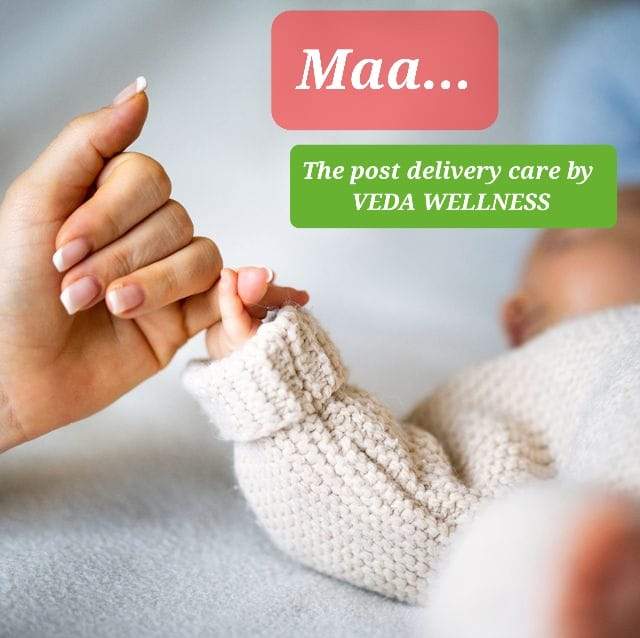
In ancient science of Ayurveda the days after birth are a sacred period-a time of rest, self care and love. When you give birth Vata increases because of the empty abdomen, loss of fluids and blood and decreased energy , creating an imbalance of body often leading to postpartum anxiety. The focus of this healing period is to bring the vata dosha into balance, restore the reproductive tissues and promote healthy lactation channels. This ensures the mothers health is cared for and in turn, allows for better bonding between mother and baby.

The weight loss program offered aims to achieve sustainable weight loss through holistic methods that prioritize overall well-being. Rather than relying on starvation or appetite suppression, this program focuses on activating sluggish fat metabolism and promoting healthy weight loss through specialized massage therapies and lifestyle modifications.
Prakriti, an individual’s unique pattern of energy, is akin to fingerprints, with each person possessing a distinct combination of physical, mental, and emotional characteristics. This constitution is established at conception and remains consistent throughout one’s life. In Ayurveda, Prakriti analysis involves determining an individual’s body type through a specialized questionnaire. This questionnaire covers various aspects such as lifestyle, physical traits, physiological functions (like digestion and excretion), moods, and temperament. By carefully interpreting the responses, an expert Ayurvedic practitioner can accurately ascertain an individual’s body type. It’s recommended to provide detailed and honest answers to ensure an accurate analysis.
The different body types based on Prakriti include:
In Ayurveda, the body’s constitution is determined by the balance of three energies called Doshas: Vata, Pitta, and Kapha.
A person’s constitution is determined by their unique combination and proportion of these Doshas. Understanding one’s body type enables personalized approaches to diet, lifestyle, and remedies, promoting optimal health and well-being. For example, individuals with a predominant Vata constitution may benefit from grounding practices and nourishing foods to balance their inherent lightness. Those with a dominant Pitta constitution might benefit from cooling activities and foods to maintain harmony in their digestion and temperament. Individuals with a predominant Kapha constitution may benefit from invigorating practices and stimulating foods to counterbalance their inherent heaviness and promote vitality. By recognizing and honoring our unique body types, we can cultivate greater self-awareness, enhance our overall health, and live in harmony with our natural rhythms and tendencies.
An Ayurvedic detox plan aims to eliminate toxins from the entire system while promoting weight loss, improving digestive health, boosting immunity, and inducing relaxation. Here’s a comprehensive plan that incorporates Ayurvedic principles:
Ayurveda offers several specialized therapies that are specifically designed to address inflammation, reduce pain and swelling, and improve joint mobility. Here are some of the most effective Ayurvedic therapies for these purposes:
By following this Ayurvedic postnatal care regimen, new mothers can promote healing, replenish their energy, and nurture themselves during the delicate postpartum period. It’s essential to listen to your body, honor your needs, and seek support when necessary to ensure a smooth transition into motherhood.
Ayurveda, often regarded as the oldest healing science, translates to “The Science of Life” in Sanskrit.
Ayurveda takes a holistic approach to health and wellness. Rather than focusing solely on diseases, Ayurveda emphasize on the balance of energy (Doshas), maintaining that optimal health is achieved when there is harmony among body, mind, and spirit. When the body’s energies are in balance and there is minimal stress, the body’s natural defense systems are strengthened, making it more resilient against illness and disease.
Key principles of Ayurveda include:
Overall, Ayurveda offers a comprehensive approach to health and healing that focuses on achieving and maintaining balance in all aspects of life. By nurturing harmony within oneself and aligning with the natural rhythms of the universe, Ayurveda empowers individuals to lead healthy, vibrant lives.
Ayurveda offers several specialized therapies that effectively address inflammation, reduce pain and swelling, and improve joint mobility. Here are some key Ayurvedic therapies for these purposes:
These Ayurvedic therapies, when used in combination with dietary and lifestyle modifications, can effectively heal inflammation, reduce pain and swelling, and improve the mobility of joints. It’s essential to consult with a qualified Ayurvedic practitioner to determine the most suitable therapies based on individual needs and conditions.
Ayurveda offers a comprehensive postnatal care regimen for new mothers, focusing on restoring and rejuvenating the body after childbirth. Here’s a specialized postnatal care plan incorporating Ayurvedic principles:
By following this Ayurvedic postnatal care regimen, new mothers can promote healing, replenish their energy, and nurture themselves during the delicate postpartum period. It’s essential to listen to your body, honor your needs, and seek support when necessary to ensure a smooth transition into motherhood.
Ayurveda offers a holistic approach to managing skin disorders such as eczema, psoriasis, and other dermatological conditions. By addressing the root causes of these skin issues and promoting overall balance in the body, Ayurveda can provide natural and effective solutions for individuals suffering from chronic skin disorders. Here’s how Ayurveda approaches the treatment of eczema, psoriasis, and other skin conditions:
Veda Wellness Slimming Program incorporates Ayurvedic principles to address weight management holistically. Here’s how each component of the program aligns with Ayurveda:
Ayurveda offers a multifaceted approach to managing stress, focusing on restoring balance to the body and mind. Here’s how Ayurveda addresses stress and anxiety:
Ayurveda offers a comprehensive approach to women’s health, providing support and care throughout every stage of life. Here’s how Ayurveda addresses women’s health concerns and restores balance: